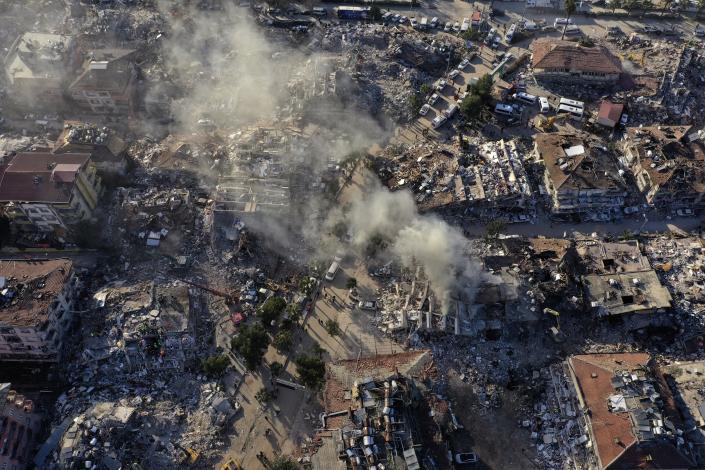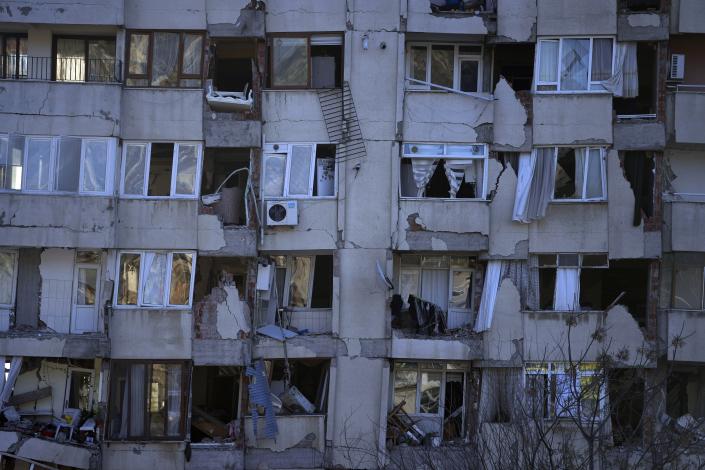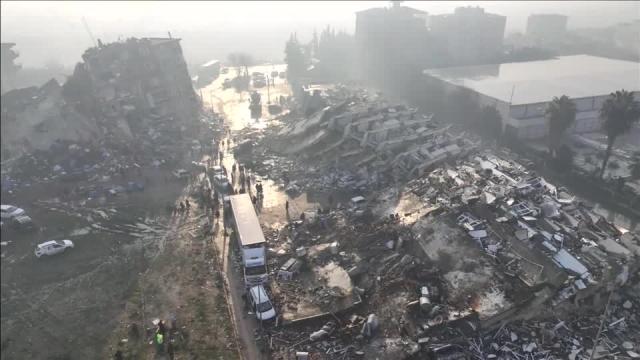Lawsuit Seeks Medical Testing After Toxic Train Derailment
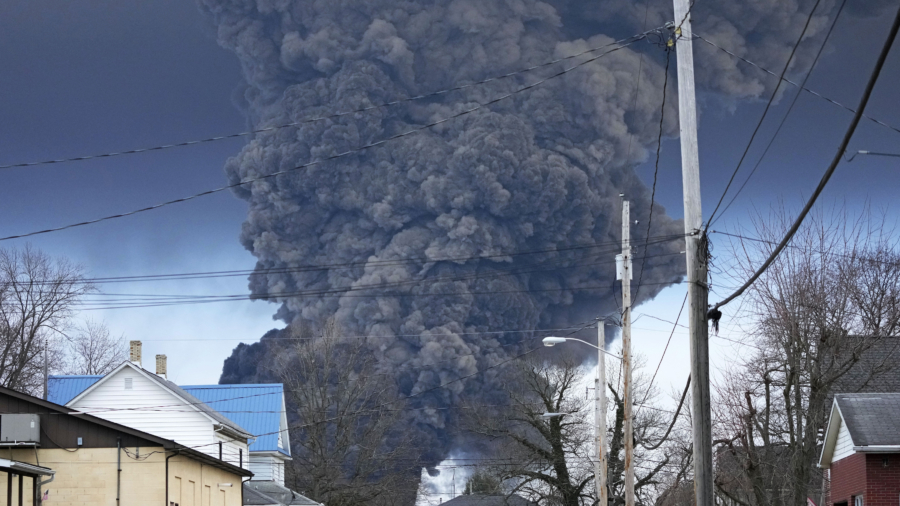
EAST PALESTINE, Ohio—Residents who filed a federal lawsuit in the fiery derailment of a train carrying toxic chemicals along the Ohio-Pennsylvania line are seeking to force Norfolk Southern to set up health monitoring for residents in both states.
The lawsuit filed Thursday by two Pennsylvania residents calls for the rail operator to pay for medical screenings and related care for anyone living within a 30-mile radius of the derailment to determine who was affected by toxic substances released after the derailment. The lawsuit also is seeking undetermined damages.
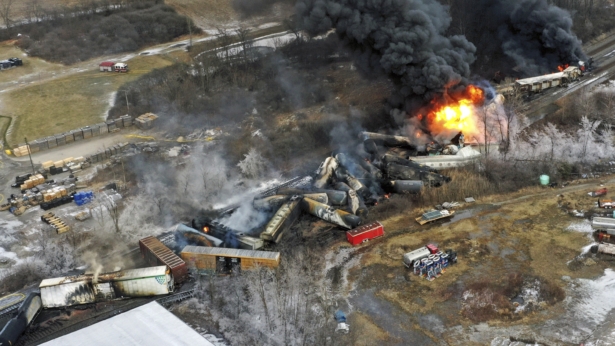
About 50 cars, including 10 carrying hazardous materials, derailed Feb. 3 in the Ohio village of East Palestine. No one was injured in the derailment that investigators said was caused by a broken axle.
Three days after the accident, authorities decided to release and burn vinyl chloride inside five tanker cars, sending hydrogen chloride and the toxic gas phosgene into the air.
Environmental regulators have been monitoring the air and water in surrounding communities and have said that so far the air quality remains safe and drinking water supplies have not been affected.
But some residents have complained about headaches and feeling sick since the derailment.
Norfolk Southern declined to comment on the lawsuit.
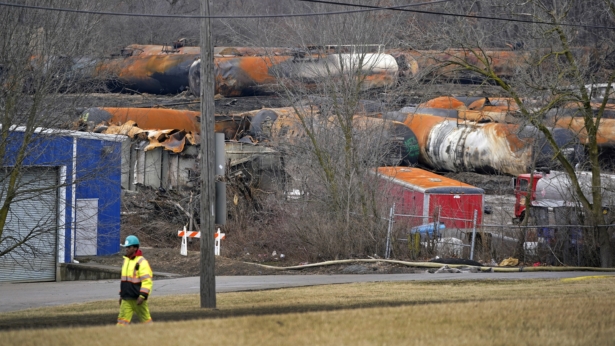
Animals reported sickened as more details come out on toxic Norfolk Southern tanker derailment in eastern Ohio
Following the all clear for residents of East Palestine, Ohio to return home given by government and company officials in the wake of the catastrophic derailment last week of a train carrying deadly vinyl chloride, there are more reports of health concerns by residents.
Questions have been raised over the broader health impact of the decision of authorities to carry out a “controlled release” Monday of thousands of pounds of the carcinogen vinyl chloride, which were intentionally dumped on the ground and set on fire from five tanker cars. Huge plumes of toxic black smoke could be seen rising into the atmosphere afterwards.
The tanker cars were part of a 50-car derailment last Friday on the Norfolk Southern rail line passing through the small community on the Pennsylvania-Ohio border, north of Pittsburgh. Officials had evacuated residents within a one- to two-mile radius of the crash site.
The village of East Palestine, population 4,700, 40 miles south of Youngstown and near the Pennsylvania state line, once had a tire and ceramics industry, but has faced deindustrialization and population decline in recent decades. The town has seen many derailments, including an Amtrak crash in 1973 that killed one and injured 19.
A certified foxkeeper just outside the evacuation zone has reported one of his foxes died after the burn. “Out of nowhere, he just started coughing really hard, just shut down, and he had liquid diarrhea and just went very fast,” Taylor Holzer told WKBN television based in Youngstown. He said all of his foxes have been sick and lethargic since the train derailment February 3. “This is not a fox acts. He is very weak, limp. His eyes are very watery and weepy,” Holzer said, adding that some of the foxes are pacing in their pens, a sign they are unwell.
“People’s cats are getting sick and dying, and people’s other birds that they have in their house that they weren’t being able to evacuate either. It’s just, it’s not safe for them.”
Another resident near the crash told of finding hundreds of dead fish in a stream near their house.
“I’m scared to go back home, ” resident Brittany Dailey told the Associated Press Monday. “I’m eventually going to have to go back, but it makes me want to sell my house and move at this point.”
One resident tweeted, “Some of my friends … returned to their homes a day ago and are now leaving—checking back into their hotel rooms. They are experiencing sickness, lung, breathing, sinusitis problems. Disgusting!”
News video clips showed cleanup workers at the crash site not wearing respirators or other protective equipment, suggesting Norfolk Southern was ignoring the safety of even its own employees in its drive to restore its operations.
At a press briefing Wednesday, Ohio Republican Governor Mike DeWine had claimed there was no longer any danger to residents. Norfolk Southern resumed trains on the rail line even before residents had returned home.
The press conference was marred by the arrest of NationNews reporter Evan Lambert, who was wrestled to the ground and handcuffed by police following a shoving incident apparently initiated by Ohio National Guard chief General John Harris Jr. The blatant attack on freedom of the press has only heightened residents’ suspicions that authorities are engaged in a cover-up of the dangers posed by the “controlled release.”
Already, several class action suits have been filed by local residents over the crash and its aftermath. Local officials complained that Norfolk Southern cleanup crews moving equipment at the crash scene could spread hazardous material on nearby roads. East Palestine Mayor Trent Conaway said he had been promised street sweepers to rectify the situation and expressed anger that train service was so quickly resumed on the rail line.
“Anybody who was in incident command [Wednesday] night can tell that I was not very happy with that,” Conaway said of the resumption of rail operations, noting there was not much he could do “unless I go tie myself to the railroad tracks. …”
The National Transportation Safety Board (NTSB), which is investigating the derailment, said that it believes problems with an axle overheating on one of the rail cars caused the accident. At a press conference February 4, NTSB member Michael Graham said that train crew had gotten an alert shortly before the crash and had begun applying the brakes.
On Friday, the Pittsburgh Post Gazette reported that the train had traveled at least 20 miles before the crash with a malfunctioning axle, according to images taken with a video camera by a business located in Salem, Ohio. According to the report, “the southbound freight train passed by Butech Bliss, an industrial equipment manufacturer in Salem. One car, a few dozen behind the first locomotive, glowed brightly on the bottom as it passed.”
“A minute later and a mile down the track, a camera at a meat processing plant called Fresh Mark captured the same fiery axle,” the Post Gazette reported.
Across the tracks from Fresh Mark was a device called a hotbox detector that scans passing trains, and if it detects an axle overheating is supposed to alert train crews. The detectors are spaced 10 to 20 miles apart. The next detector was outside East Palestine. Crews apparently did not get a warning until they were less than one mile out of town. The 20 miles between Salem and East Palestine are mostly rural.
According to a retired train engineer cited by AP, if an alert sounds, the train is supposed to stop and the axle is inspected. A 140-car train like the one that derailed would probably take one mile to stop, he estimated.
An NTSB official said that part of the investigation would be to check the hotbox detectors to make sure they were working.
Federal Railroad Administration data showed that hazardous materials were released in 11 railroad accidents in 2022. There were 20 such incidents in both 2018 and 2020.
The danger of catastrophic accidents is increasing as all the major railroads have slashed thousands of jobs and reduced the size of train crews to cut costs. Railroads are running longer and longer trains with smaller crews. According to an interview with Greg Regan, president of the AFL-CIO’s Transportation Trades Department, published by the Associated Press, inspectors used to get two minutes to inspect a rail car but now get 30 to 45 seconds. Signalmen who maintain crossing guards and safety signals along the tracks have larger territories to cover.


